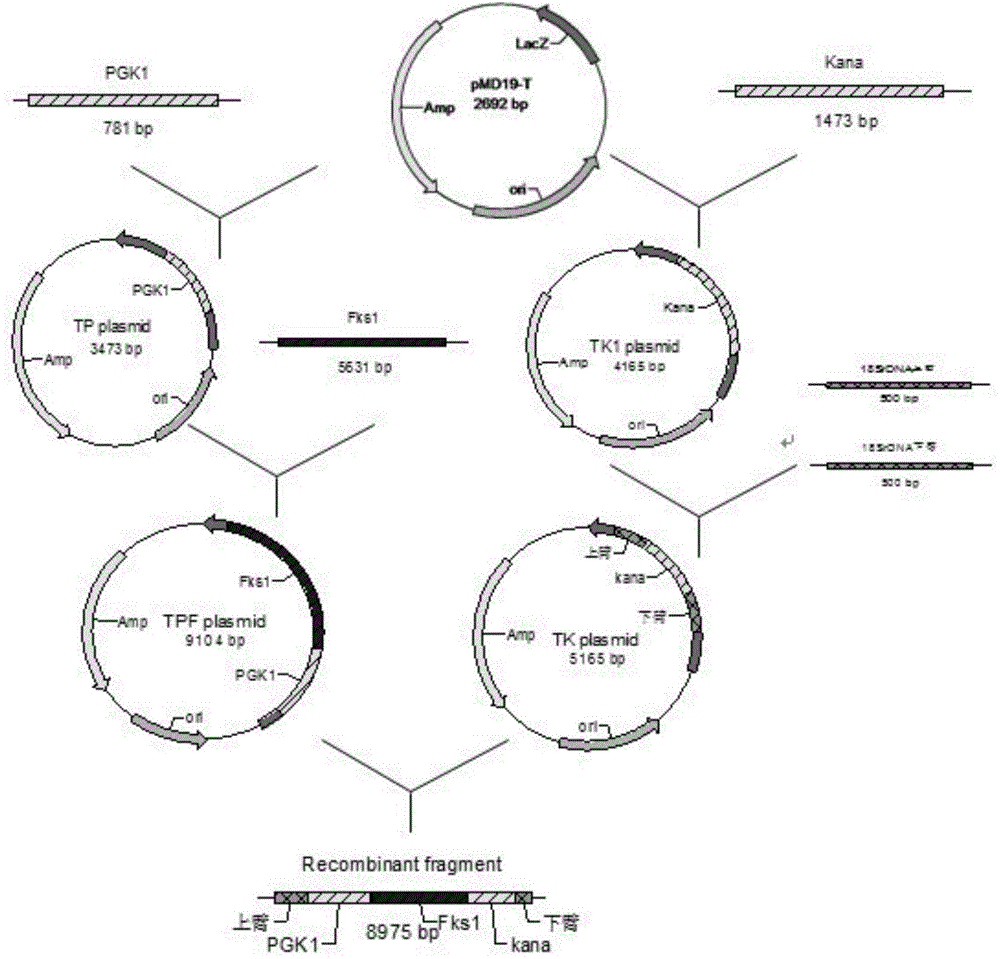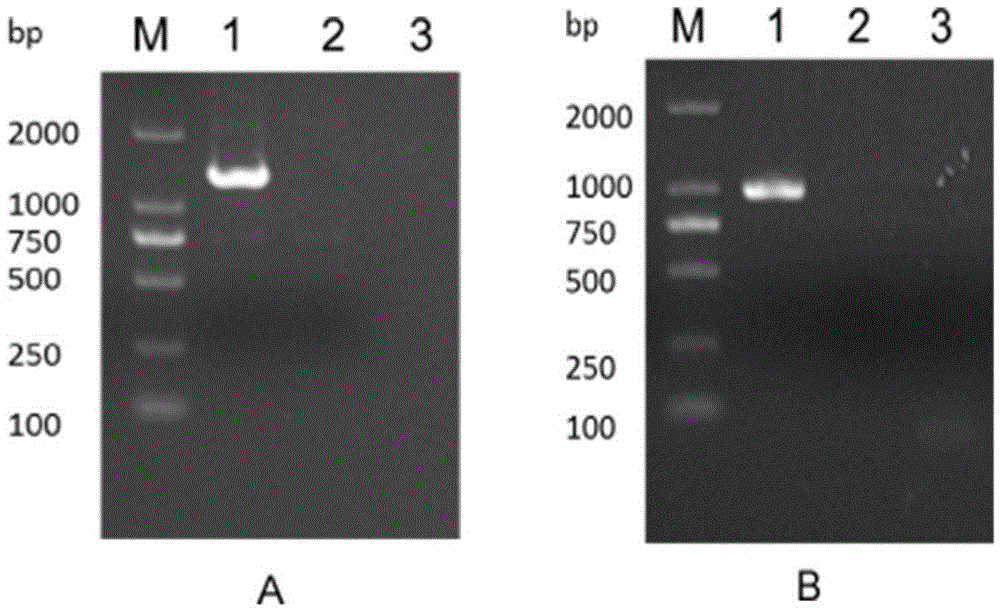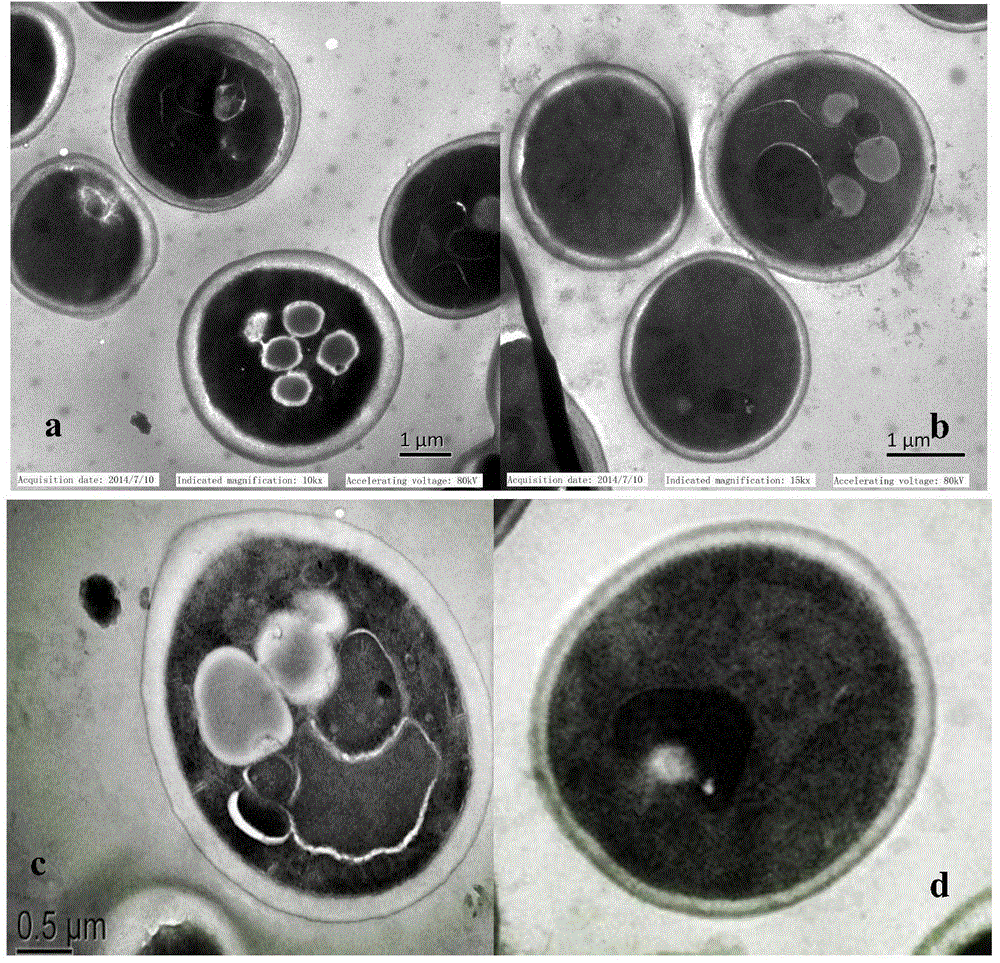Saccharomyces cerevisiae strain with excellent autolysis resistance
A technology of Saccharomyces cerevisiae and microbial strains, applied in the fields of molecular biology and microbiology, can solve the problems of incomplete understanding of yeast autolysis mechanism, and achieve the effect of yeast autolysis
- Summary
- Abstract
- Description
- Claims
- Application Information
AI Technical Summary
Problems solved by technology
Method used
Image
Examples
Embodiment 1
[0025] Construction of embodiment 1 fks1 gene overexpression plasmid
[0026] Saccharomyces cerevisiae model strain W303 (type strain) was used as the host strain, its genome was extracted, the required fragments were amplified by PCR: 18SrDNA-up, 18SrDNA-down, PGK1 and fks1, and the KanMX fragment was amplified using the pUG6 plasmid as a template. The obtained fragments were respectively connected to pMD-19T vector by subcloning, and finally the target fragments were obtained by double enzyme digestion. The whole process of molecular manipulation is as figure 1 shown.
Embodiment 2
[0027] Construction and verification of embodiment 2 recombinant yeast
[0028] The target fragment was introduced into yeast cells by the chemical transformation method in acetic acid, integrated into the yeast genome through homologous recombination, and the transformants were screened by means of G418-resistant replica plates. The result is as figure 2 shown. Extract the transformant genome, and design primers 1 and 2 to screen and verify positive transformants. Primer 1 intercepts the middle part of 18SrDNA as an upstream primer, and the middle part of PGK1 as a downstream primer. If the amplification is successful, there will be 1270bp; primer 2 intercepts KanMX and 18SrDNA The middle position is used as upstream and downstream primers, if successful, there will be a 975bp band.
[0029] The obtained positive transformant was deposited in the General Microorganism Center of China Microbiological Culture Collection Management Committee on September 1, 2014. The preserva...
Embodiment 3
[0030] Embodiment 3 recombinant strain TEM analysis
[0031] In order to visually observe the cell wall changes of the strains, the sections of recombinant bacteria and wild bacteria cells were observed under transmission electron microscope. image 3 It showed that the cell wall of the recombinant bacteria was significantly thicker than that of the wild bacteria. According to the calculation, the cell wall thickness of the wild bacteria is about 200nm, and that of the recombinant bacteria CGMCC No.9628 is about 500nm, twice as much as that of the wild bacteria. The increase of cell wall thickness is due to the accumulation of 1,3-β-glucan content, and the content of 1,3-β-glucan in the cell wall of the recombinant strain CGMCC No.9628 is 62.51% higher than that of the wild strain, which proves that Good effect of gene overexpression method.
PUM
| Property | Measurement | Unit |
|---|---|---|
| thickness | aaaaa | aaaaa |
Abstract
Description
Claims
Application Information
 Login to View More
Login to View More - R&D
- Intellectual Property
- Life Sciences
- Materials
- Tech Scout
- Unparalleled Data Quality
- Higher Quality Content
- 60% Fewer Hallucinations
Browse by: Latest US Patents, China's latest patents, Technical Efficacy Thesaurus, Application Domain, Technology Topic, Popular Technical Reports.
© 2025 PatSnap. All rights reserved.Legal|Privacy policy|Modern Slavery Act Transparency Statement|Sitemap|About US| Contact US: help@patsnap.com



